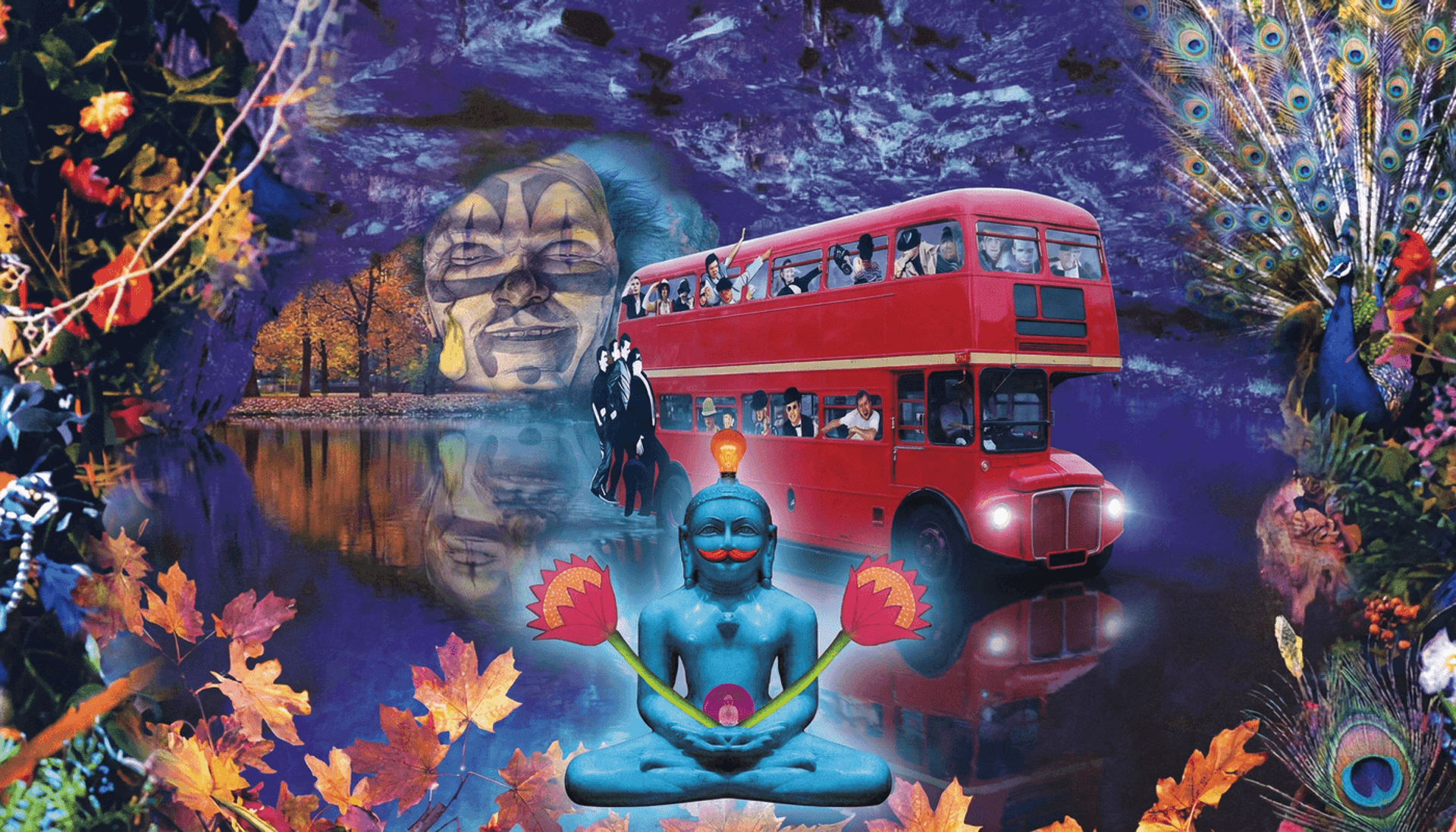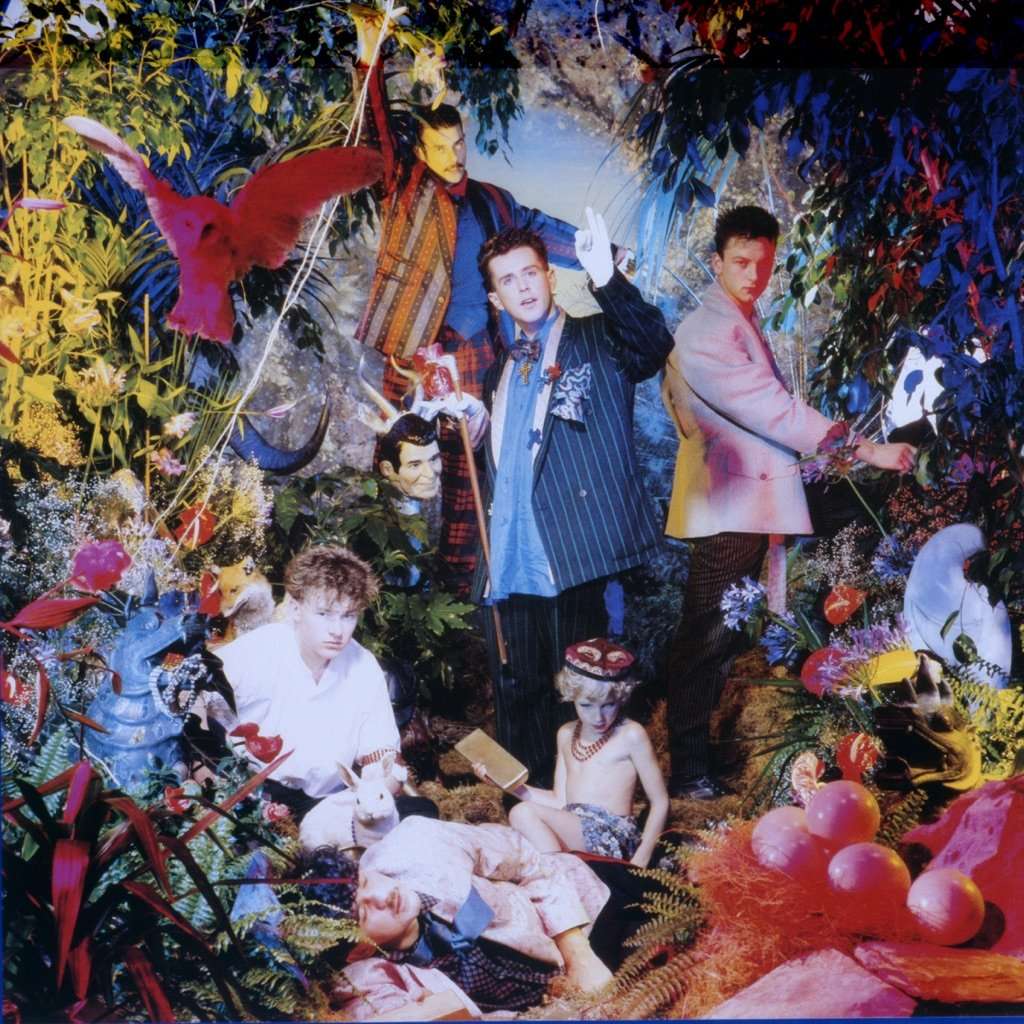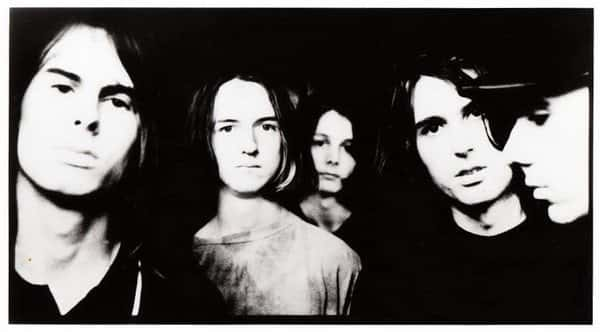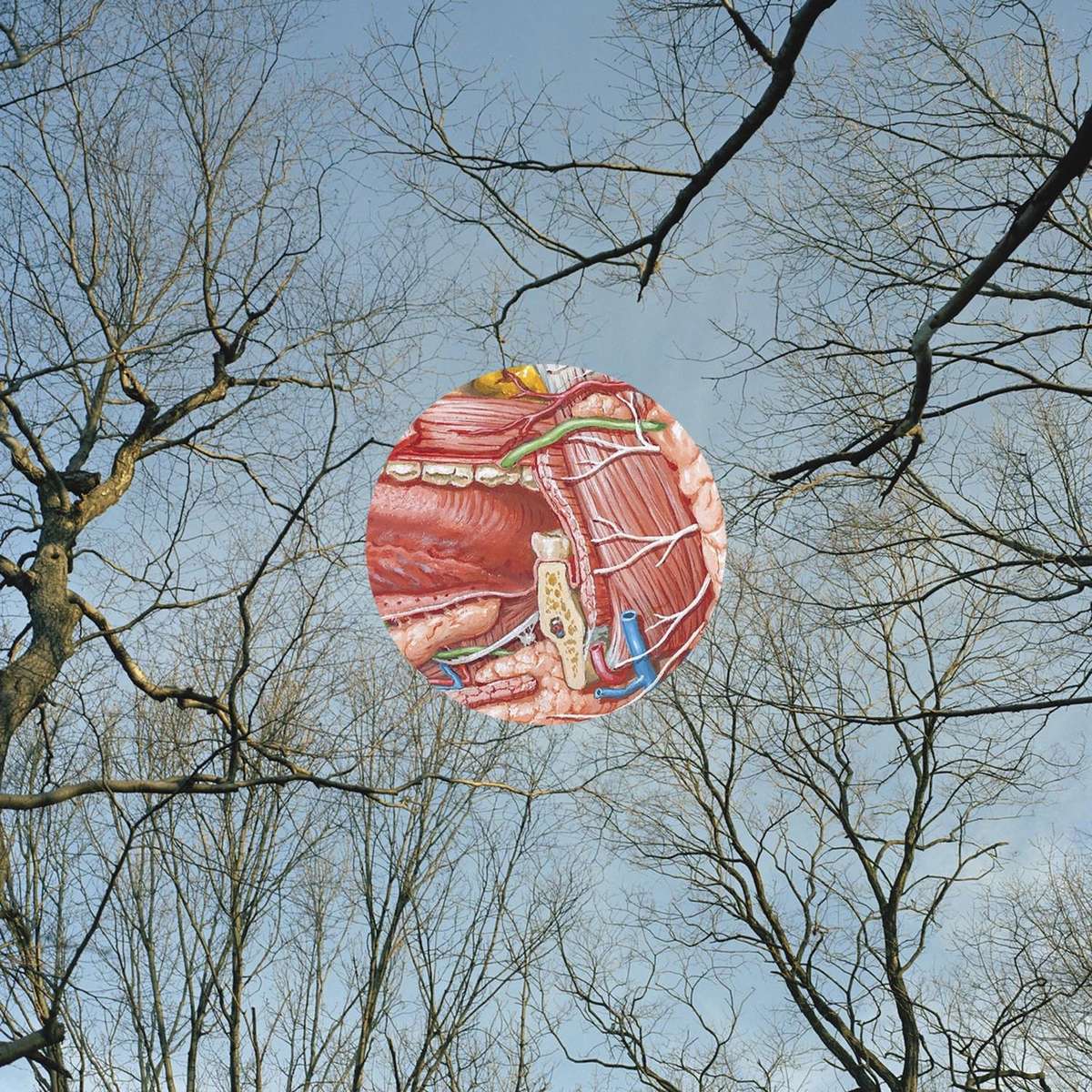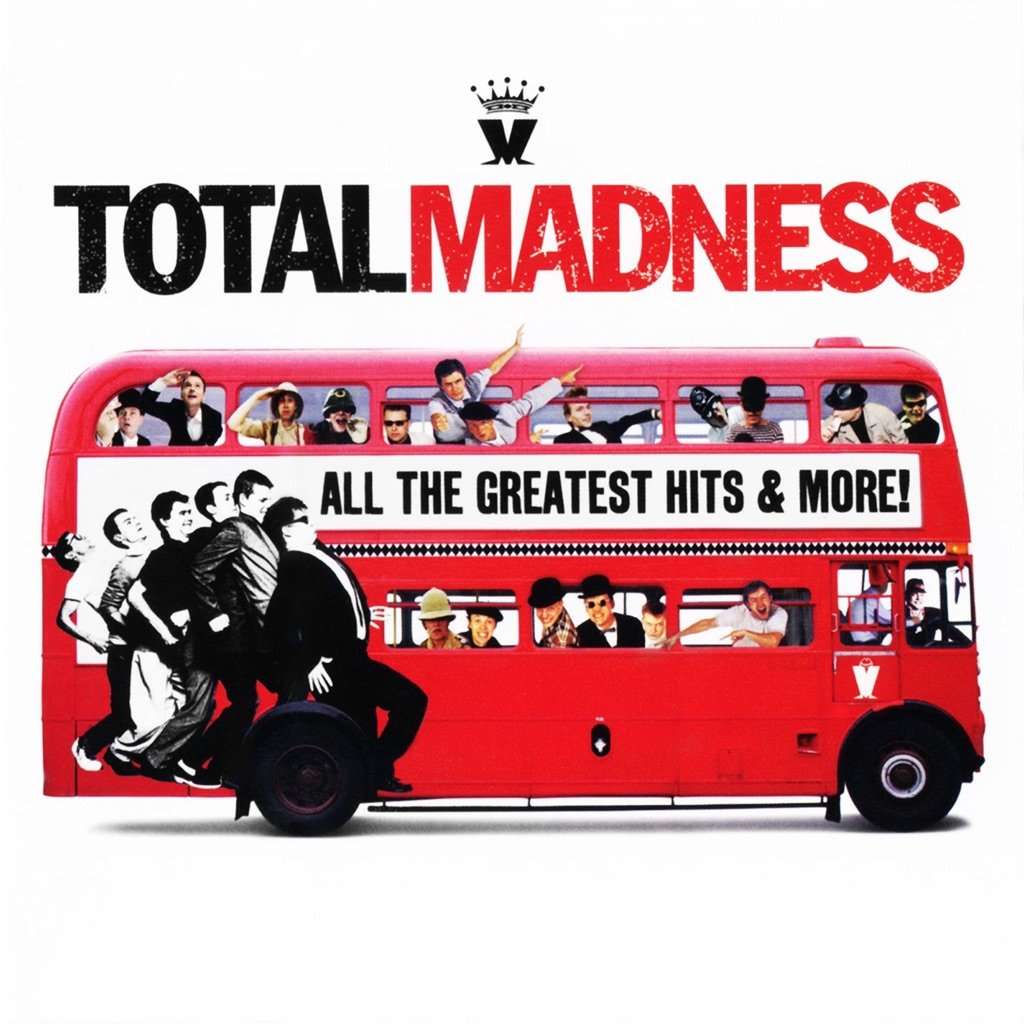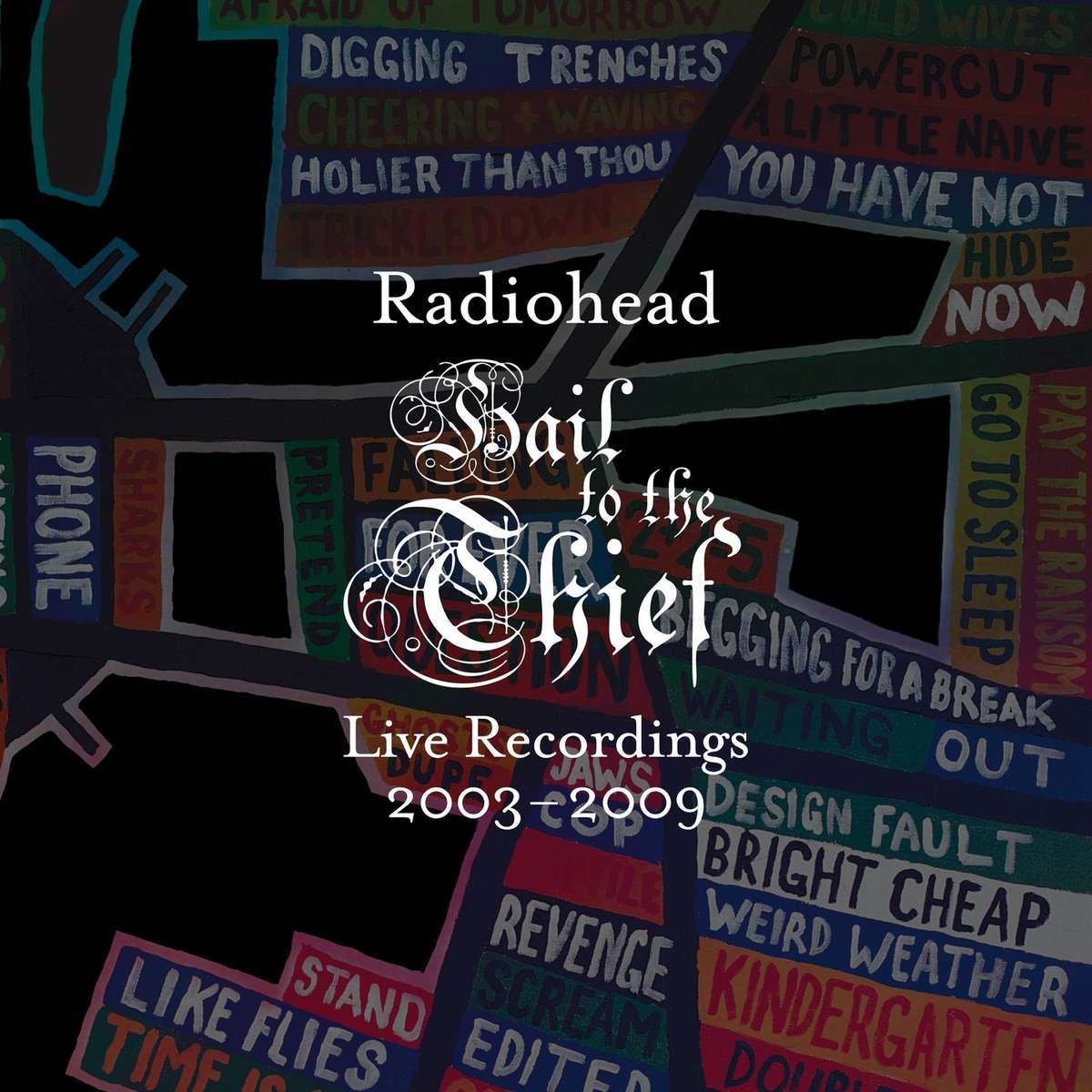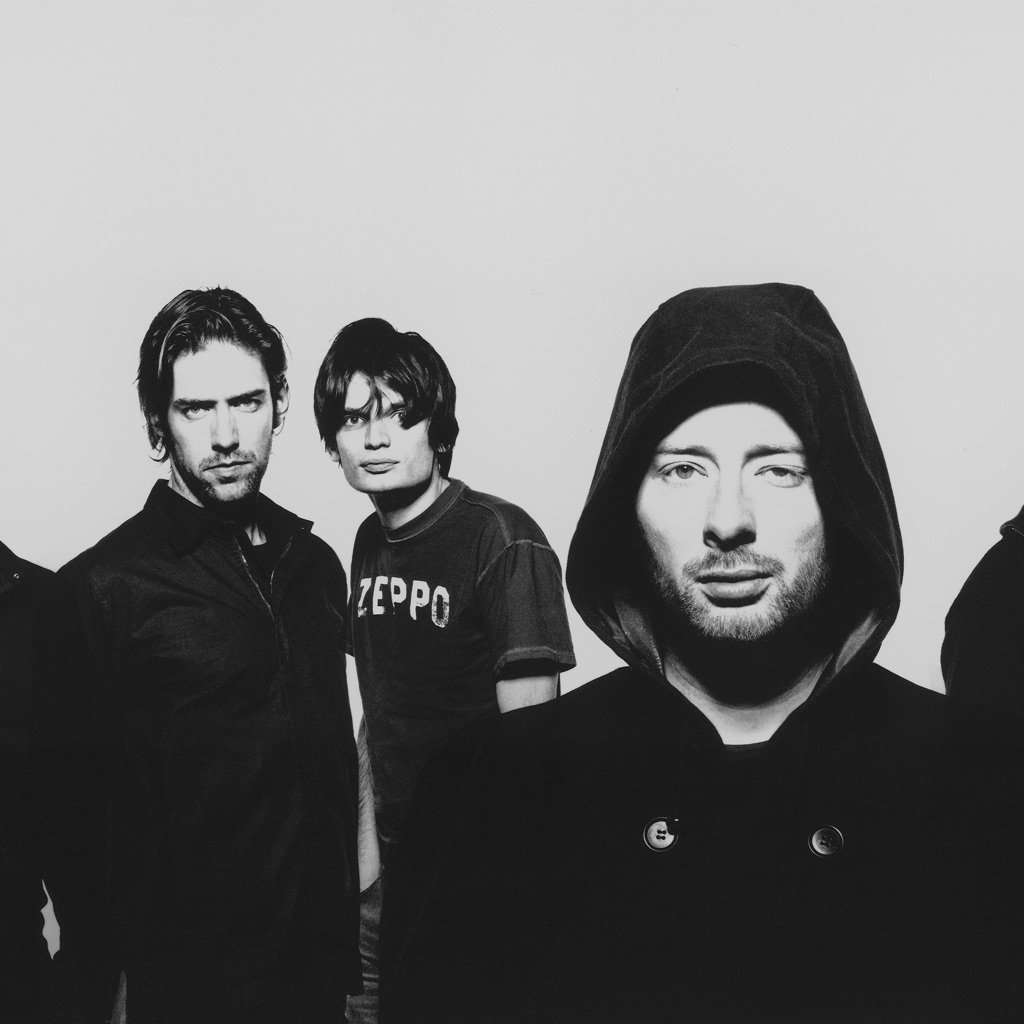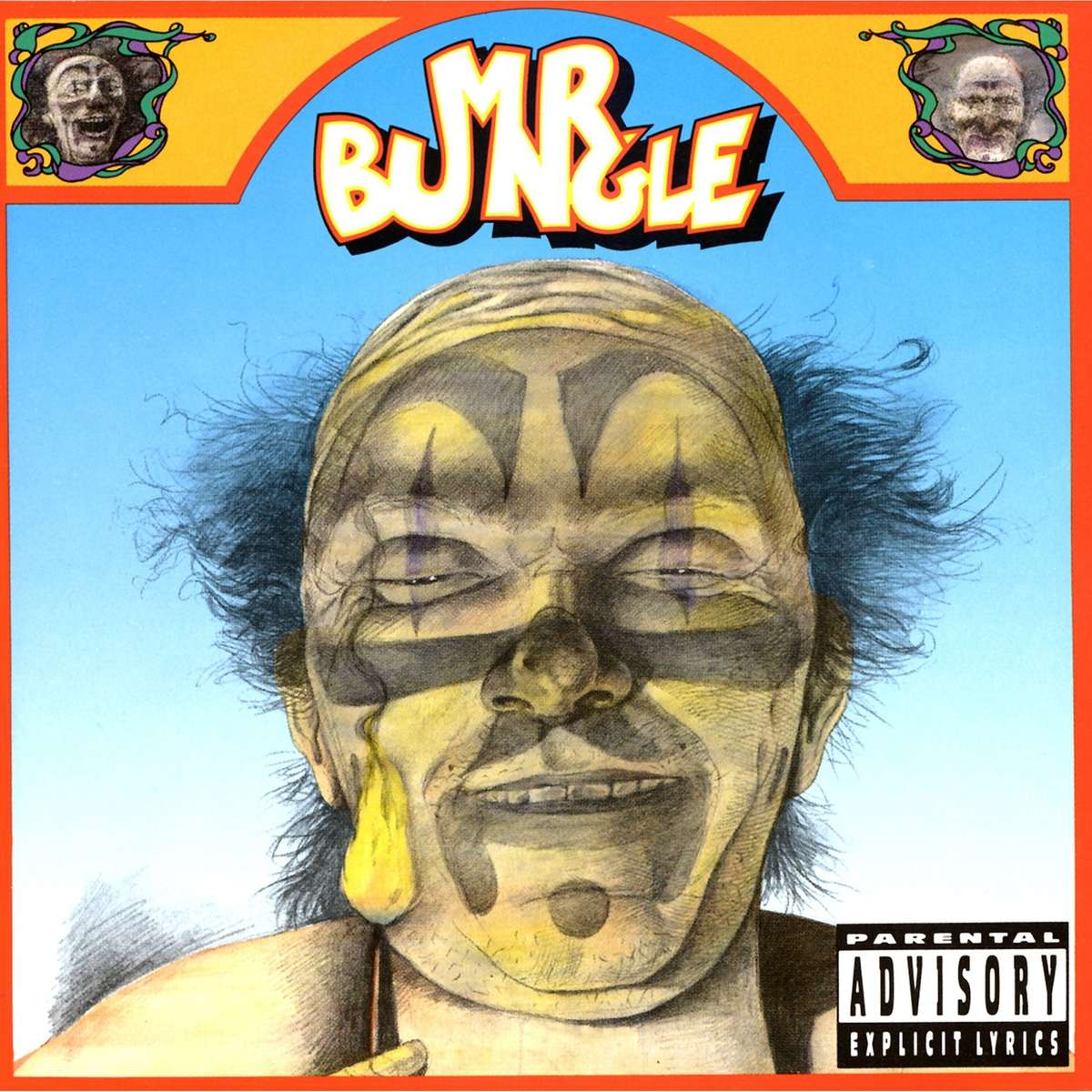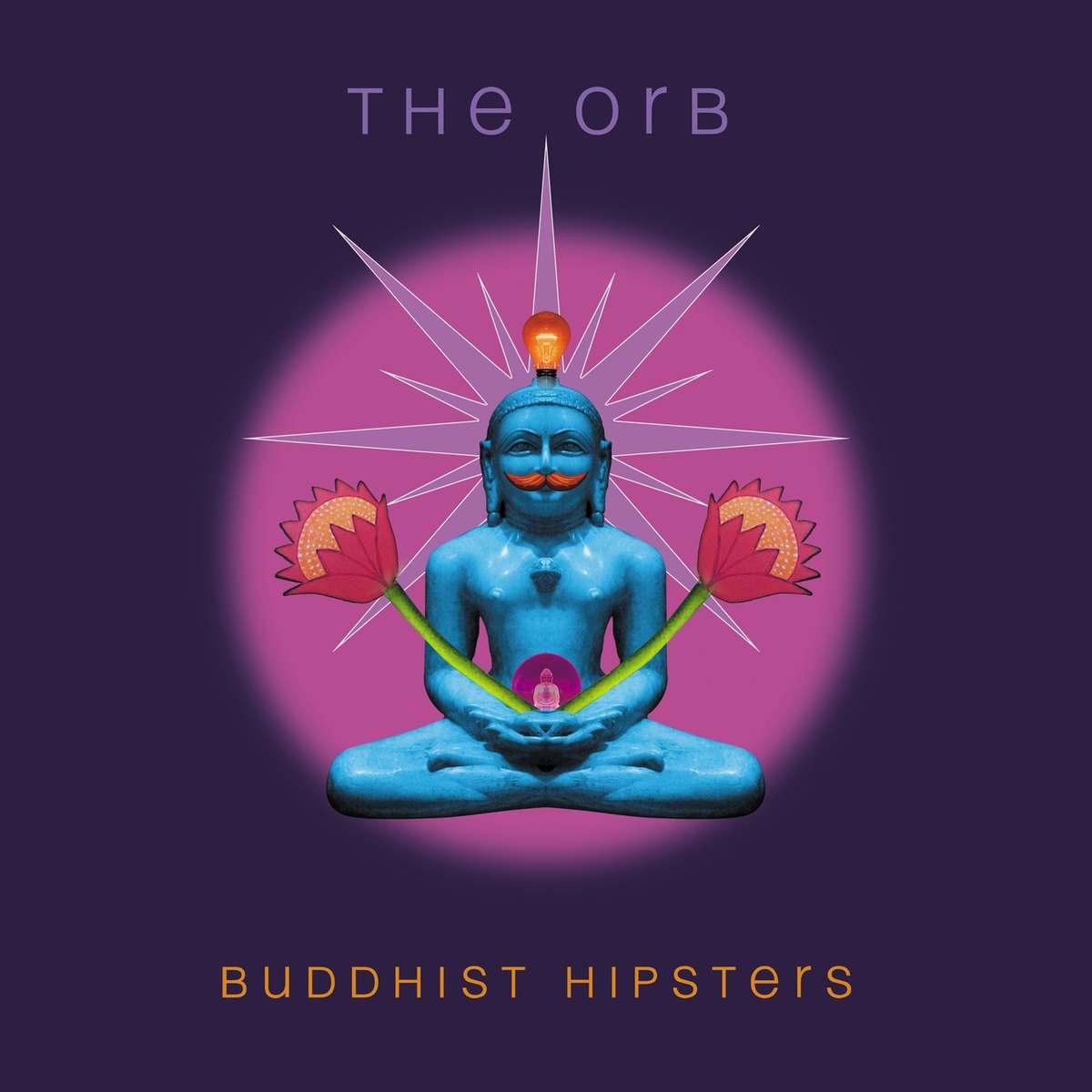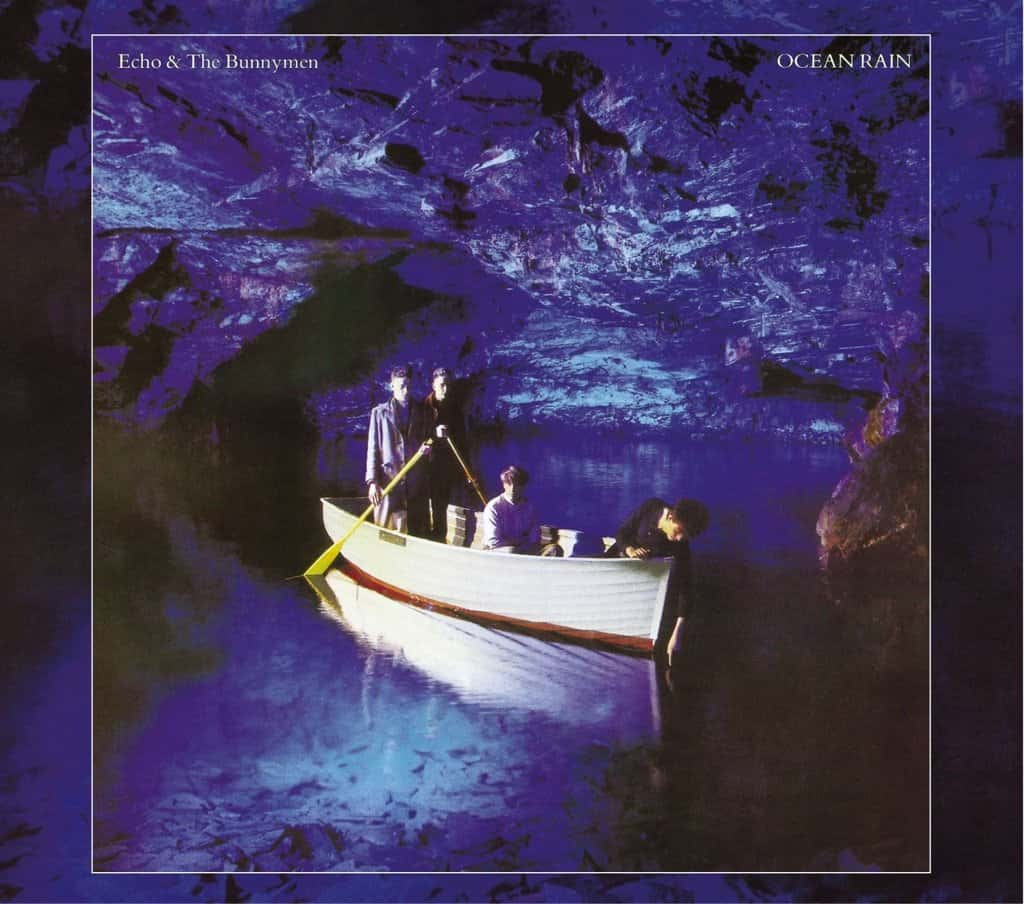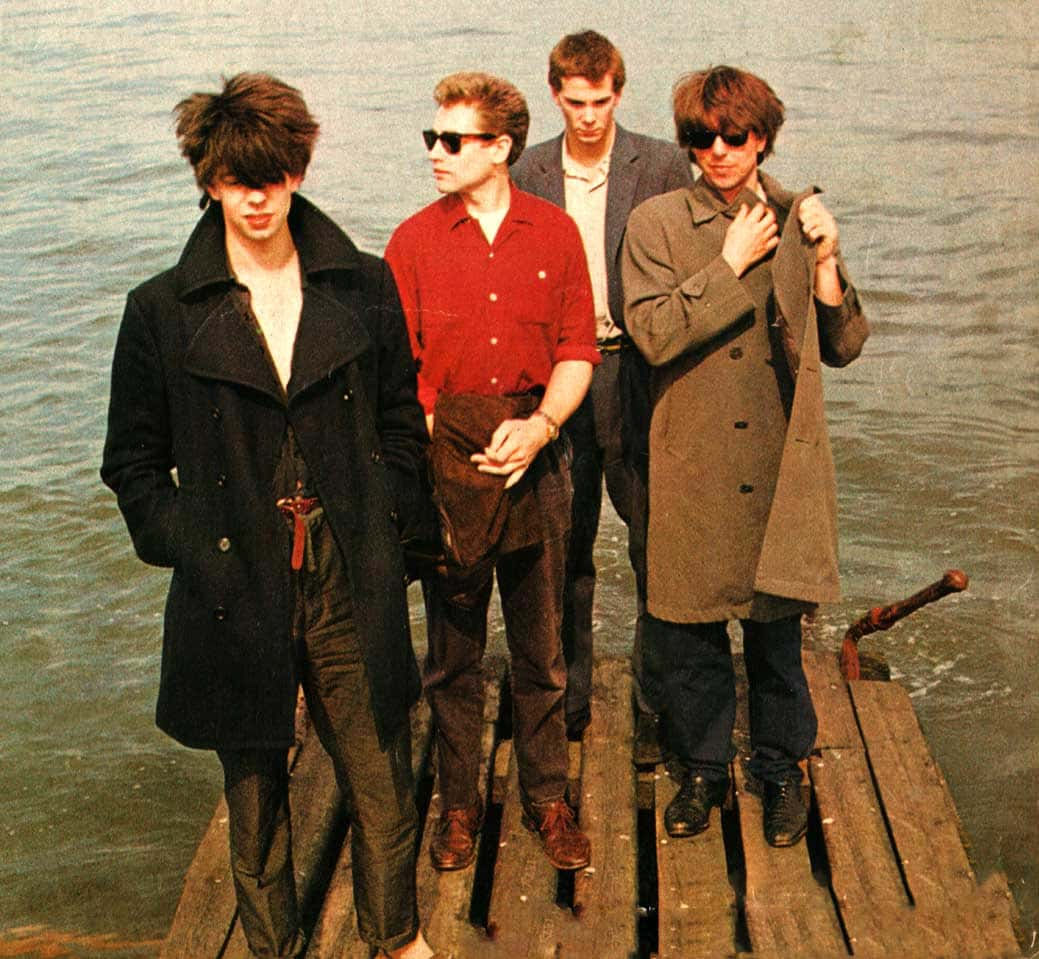A Musical Odyssey: From Pleasuredomes to Echoes of Youthful Dreams
Welcome to the Pleasuredome 🎶
The Euphoria of Excess: A Time Capsule of 1984 🎉
When Frankie Goes to Hollywood unleashed Welcome to the Pleasuredome upon the world in late 1984, they didnt just release an album; they detonated a cultural bombshell. Combining outrageous lyrical content with euphoric synth-pop sounds, the record emerged from the ashes of post-punk England like a beacon for those seeking liberation from societal norms. With tracks often revolving around themes of desire, sexuality, and escapism, it mirrored a society caught between the liberating glow of the disco ball and the sobering shadows of an AIDS crisis that was just beginning to unfold.
Pop Culture Provocation: The Lyrics that Shocked and Awed 💥
The groups frontman, Holly Johnson, with his flamboyant style and unabashed openness about his sexuality, presented themes that would have been unthinkable for the era. Relax, the albums most notorious single, famously stirred controversy, provoking both admiration and outrage, provoking the ire of moralistic critics. The well-known anecdote surrounding the BBC banning the song—which they labeled as lewd—only added to its mystique. It became an anthem of pushing boundaries, turning restraint into wild abandon, setting a precedent that reverberates through pop cultures ethos even today.
The Sounds of Seduction: Synthesizers and Soundscapes 🎹
While the lyrics dazzled and shocked, the albums production was equally groundbreaking. Produced by Stephen Hague and Trevor Horn, known for their pioneering work with various artists, the tracklist of Welcome to the Pleasuredome is a sonic extravaganza. The seamless fusion of orchestral elements, throbbing synth lines, and layers of vocal harmonies crafted lush soundscapes that elevated the standard for the pop genre. In an era dominated by the rawness of punk and the authenticity of grunge, Frankie’s glossy production stands as a daring defiance of the conventional.
Horn’s technicolor production innovations introduced a new wave of experimentation, utilizing drum machines and synthesizers in a way that would later influence genres like synth-pop and electronic music. The track Two Tribes, aside from its thematic commentary on war and politics, perfectly encapsulated the eras musical evolution, merging pop with a message that resonated far and wide.
Visual Spectacle: More Than Just Music 🎨
Frankie Goes to Hollywood wasnt a band that merely relied on sound; they also revolutionized the visual impact of music. The accompanying artwork for both the album and its singles, featuring famously risqué imagery designed by Klaus Voormann, reinforced the themes of pleasure and liberation. This visual aesthetic was integral to their identity, with the iconic cover borrowing inspiration from Les Demoiselles dAvignon by Picasso—a bold statement in its own right.
Their music videos, often lavish productions filled with sexual innuendos and theatricality, offered fans not just an auditory experience but a full-blown artistic journey. These visuals played a significant role in shaping the music video format, demonstrating that visual storytelling was just as vital as the sound itself.
A Legacy Etched in Time: The Dream Still Lives On 🎵
As the dust settled on Welcome to the Pleasuredome, it became clear that the album had left an indelible mark on the landscape of pop music. It paved the way for a generation of artists, illustrating that music could be a powerful conduit for personal and political expression. The likes of Lady Gaga and Sam Smith cite Frankie’s unyielding embrace of sexuality and art as an inspiration for their own work, continuing the revolution that began in the 80s.
Fast forward to the present, and the anomalies of a world grappling with fluctuating norms still echo the urgency of Frankies messages. While mainstream pop has embraced a broader conversation about love and identity, it’s undeniably indebted to trailblazers like Frankie Goes to Hollywood. Their audacious introduction of themes that once existed on the fringes now occupies the heart of pop culture—and we could argue that it was the Pleasuredome that began this extravagant trajectory.
In a time where liberation was still on the horizon, Welcome to the Pleasuredome beckoned listeners into a libertines paradise. From the extravagant beats to Holly Johnsons soaring vocals, the album has blossomed into a celebration of the very essence of pleasure, a testament to music’s transformative power that still reverberates today. 🌈
Best Of 🎶
A Tapestry of Sound: Springsteen’s Greatest Hits 🌟
In 1995, Bruce Springsteen unleashed Greatest Hits, a compendium of his most iconic tracks; yet, it stands as more than just a collection. This album functions as a documentary of his remarkable evolution from the gritty rock anthems of the 70s to almost cinematic ballads of the 90s. Featuring timeless classics like Born to Run and Dancing in the Dark, it curates a saga of his journey—reflecting both personal stories and universal themes that resonate with listeners across generations.
The Soundtrack of a Nation 🎤
Springsteen’s music has long been perceived as the “soundtrack to America.” This compilation captures that essence perfectly, framing pivotal moments of social and political upheaval. For example, the inclusion of The River, an exploration of dreams dashed under the weight of economic decline, mirrors the landscape of America in the early 80s. Similarly, Streets of Philadelphia, a haunting reflection on loss and resilience, emerged from a society grappling with the AIDS epidemic. It is a witness to times when music became not only a comfort but also a clarion call for change.
Hidden Gems and Overlooked Tracks 💎
While the hits define its commercial success, Greatest Hits also provides a stage for lesser-known treasures. Tracks like Atlantic City offer a glimpse into Springsteens acoustic vulnerability, showcasing his folk influences—something he began to delve into more deeply in his album Nebraska. Songs like these highlight the evolution of his songwriting, punctuated by simplicity and raw emotion, diverging from the bombastic production of his earlier works. The inclusion of these tracks reminds listeners that the Boss is at his strongest when hes stripped down to his emotional core.
The Impact on Future Generations 🌍
The far-reaching impact of Greatest Hits on contemporary artists is undeniable. Musicians ranging from John Mayer to the Gaslight Anthem have cited Springsteen as a pivotal influence. His storytelling style has inspired a generation to prioritize lyrical depth in their own music, moving beyond mere catchy hooks. The album serves as a bridge—connecting the punk sensibilities of the late 70s with the indie storytelling of today. Ironically, while Springsteen’s sound remains distinctly his own, the essence of his songwriting can now be found in so many emerging artists who seek to convey their own narratives.
Behind the Scenes: The Making of a Classic 🎬
Recording “Greatest Hits” was no mere task of sifting through old tracks; it involved revisiting decades of work in a new light. Springsteen and his team meticulously chose which songs would tell the most compelling story, leading to the creation of fresh mixes and remastering processes that only enhanced the vibrancy of the original recordings. The album reflects a fine-tuning of both sound and thematic continuity—drawing threads between tracks that highlight his lyrical prowess.
Fan Reception: A Collective Experience 🎉
Upon its release, Greatest Hits was embraced by fans who eagerly awaited an opportunity to revisit the classics alongside new tracks like Murder Incorporated and Secret Garden. It offered a cathartic experience—a reunion for diehard fans and a welcoming introduction for newcomers to Springsteens artistry. In concerts, tracks from this album often elicit euphoric reactions, reinforcing a sense of community among fans who have found solace and inspiration in Springsteen’s narratives.
Legacy in the Cultural Landscape 🌄
More than just a musical compilation, Greatest Hits has established itself within the cultural zeitgeist, especially as the need for storytelling through music has become more critical in times of social unrest. Springsteen’s work has always shone a light on Americana—the dreams and disillusionments of the everyday working class. Today, as listeners turn to music for both escape and connection, his Greatest Hits resonates louder than ever. It is a continuing conversation between the artist and the world he chronicles—reminding us that in both boom and bust, the power of song endures.
In conclusion, Bruce Springsteens Greatest Hits is not merely a collection of songs factually bound by years or charts; rather, its a vivid snapshot of a restless American spirit, forever alive, evolving, and inspiring. Through this album, we are not just listeners but participants in an ongoing narrative—one that continues to shape our understanding of music and the experiences therein. ✨
The Best of Chapterhouse 🌌
A Sonic Time Capsule 🕰️
In a world where shoegaze blossomed in the late 80s and early 90s, Chapterhouse emerged as key architects of this ethereal genre. Their greatest hits compilation, The Best of Chapterhouse, released in 2007, serves as a sonic time capsule, capturing not just the essence of their sound but also a slice of an era. Curated to reflect the zenith of their creativity, the album invites listeners to wade through pools of lush guitar reverberations and hypnotic rhythms. Its a nostalgic journey that unveils the reflective, dreamy world Chapterhouse crafted, while also spotlighting their profound influence on modern alternative music.
From Oblivion to Acclaim 🎸
While many fans remember Chapterhouse for their two studio albums, Whirlpool (1991) and Blood Music (1993), few realize that their journey almost slipped into obscurity after their disbandment in 1994. The resurgence of interest, particularly in the shoegaze genre, alongside the rise of the internet as a platform for older music, set the stage for The Best of Chapterhouse. This compilation wasn’t just a collection of hits; it was a beacon for old fans and new listeners alike, unearthing gems that encapsulate the band’s signature sound, characterized by atmospheric layers and textured melodies.
More Than Just a Compilation 🎶
Unlike standard greatest hits albums, which often serve as commercial vehicles, The Best of Chapterhouse is punctuated with a sense of purpose. The inner sleeve features artwork and reflections that take listeners beyond mere auditory experience. With each track, youre not just revisiting a song; youre stepping into a narrative shared between the band and their devoted following. The album resonates with an essence of community, reflecting shared memories across decades as if Chapterhouse sang not just for themselves, but for each soul that found solace in their music.
A Revival of Lost Sounds 🌍
Interestingly, the unique soundscapes Chapterhouse created were often a blend of swirling guitars and mesmerizing vocals, occasionally dubbed the second wave of shoegaze. The band’s exploration of psychedelic elements and fragile melodies paved the way for later acts, including artists from the 2000s revival like M83 and Beach House. Their influence is a testament to the cyclic nature of music trends, and The Best of Chapterhouse serves as a vital bridge between past and present. In a contemporary musical landscape marked by a continual search for authenticity, Chapterhouses earlier works find renewed appreciation, emphasizing how music can traverse time and remain relevant.
Stories Behind the Sounds 🎤
Behind the haunting melodies are tales of artistic struggle and rebirth. The making of Whirlpool was riddled with challenges, from navigating the often tumultuous music industry to battling their own creative insecurities. Their transition to Blood Music, which featured a more refined sound, encapsulated a stage of growth for the band—a tension between ambition and self-doubt. Though The Best of Chapterhouse primarily distills their most popular tracks, the essence of their journey—filled with experimentation, evolution, and resilience—is palpable within each note.
Legacy of Dreamscapes 🌠
The legacy of Chapterhouse and The Best of Chapterhouse extends beyond the songs themselves; it resides in the echo of their ethereal sounds that influenced a multitude of bands and genres. The shoegaze revival, merging rock with ambient soundscapes, witnessed a renaissance in the ’00s, with artists and producers drawing inspiration from Chapterhouse’s early work. In a way, the compilation stands as a reminder that influential music never truly fades; it dims, waiting for the right moment to shimmer once more.
Final Reflection 🌅
As you navigate the gentle waves of sound in The Best of Chapterhouse, take a moment to appreciate the moments when the veil between the past and present blurs. With its shimmering guitars and introspective lyrics, the album isnt merely a retrospective; it’s a reawakening, a celebration of what was and what remains possible in the world of sound. Just as their music encapsulates a dreamy haze, Chapterhouse calls upon listeners to dream once again—reminding us all of the potent magic that music can hold.
Glean 🎶
A Nostalgic Return to Form 🌟
It’s a curious twist of fate that the seventeenth studio album from They Might Be Giants, titled Glean, arrived in a world so ripe for their signature blend of whimsy and profundity. Released in 2015, this album felt like a reflective nod to both their expansive journey and the fresh possibilities of contemporary music. Such is their nature; they balance the familiar with the innovative, encapsulating themes that resonate across generations.
Glean is often heralded as a return to form, likened to their self-titled 1986 debut known affectionately as The Pink Album. Both records showcase a delightful hodgepodge of musical styles, ranging from rock and pop to the oddities of childrens music. Fans and critics alike heralded it as perhaps their best work since the ‘80s, reinforcing the notion that they had a unique ability to reinvent themselves while remaining steadfastly true to their idiosyncratic essence.
Dial-A-Song: A Vintage Revival 📞
The album gained additional intrigue with the revival of their beloved Dial-A-Song service, a quirky relic from the early 1980s where fans could call in to hear new tracks. In a delightful twist of modern technology, this service was updated to an online format, blending nostalgia with contemporary convenience. The return of Dial-A-Song caught the attention of both long-time fans and a new generation, sparking interest in their back catalog and inviting listeners to witness their evolution.
This innovative approach reflected their ability to not only adapt to changes in technology but thrive within them, embodying their spirit of continuous rebirth. Through Dial-A-Song, they engaged with their audience in a profoundly personal yet delightfully eccentric manner, creating a sense of community around their music.
Lyrical Quirkiness Meets Depth 🔍
At the heart of Glean lies an intricate dance of quirks and insights. Tracks like “All the Lazy Boyfriends” and “It’s Good to Be Alive” shift effortlessly between playful absurdity and poignant commentary on human connection. This juxtaposition is a hallmark of They Might Be Giants, who have always excelled at capturing the elusive balance between light-heartedness and contemplative depth.
For those familiar with the duos discography, Glean embodies the absurdity of everyday life, evoking smiles and contemplative musings in equal measure. The lyrical turns they take prompt listeners to ponder the complexities of existence while toe-tapping to their catchy tunes. It’s a concoction few can master, but they do it with verve and a wink.
A Tapestry of Innovation and Tradition 🎨
Musically, Glean showcases a medley of influences, seamlessly intertwining elements like doo-wop, pop, and even hints of world music. This eclecticism is not mere nostalgic indulgence; it roots the band’s sound in a richer musical tradition while also extending an invitation to new listeners. The production captures their playful punk aesthetic while remaining polished enough to highlight their growth as artists.
Moreover, Glean offers an intriguing insight into their innovative recording techniques. They experimented with different instruments and production styles, leading to a vibrant texture often overlooked in simpler genre categorizations. This meticulous approach reflects a broader trend in indie music during the mid-2010s—an era where artists felt empowered to push boundaries and explore soundscapes that were once thought unattainable.
From Album to Legacy 🌍
Fan reception has proven that Glean possesses deep roots, inviting discussions on its impact not just as an album, but as a reflection of ongoing cultural narratives. The blend of ear-worm melodies with unconventional subjects has touched a number of artists across genres. Glean represents more than a mere addition to their discography; it encapsulates They Might Be Giants’ ability to transcend their time while maintaining relevance in pop culture dialogues.
As we examine their trajectory, we recognize They Might Be Giants not only as purveyors of clever, catchy songs, but as profound storytellers who have shaped the landscape of alternative music. Glean, in this respect, is much like a well-tended garden, a lush testament to years of growth, experimentation, and—above all—joyous creativity. Whether it’s through revisiting nostalgic favorites or inspiring fledgling musicians, the album continues to echo within the fabric of modern music, reminding us that it truly is good to be alive. 🌈
Total Madness 🎶
Total Madness isnt just another compilation in the expansive discography of the beloved British ska band; it’s a vibrant tapestry woven from the threads of an era that celebrated both exuberance and introspection. Released in 1997, this greatest hits collection serves not only as a reminder of Madnesss most infectious tunes but as a reflection of the cultural zeitgeist that shaped their music and lyrics.
A Time Capsule of Sound ⏳
When you dive into Total Madness, youre not just listening to catchy melodies; youre stepping into a microcosm of late 70s and early 80s Britain. The bands unique blend of ska, pop, and nutty humor creates an atmosphere where political commentary is danced to, and the mundane turns magical. Hits like Our House remain cherished staples, but it’s worth noting how this songs intricate lyrics—detailing the idyllic chaos of family life—echo a relatable charm, one that resonates even today. It’s fascinating how Madness harnessed the mundanity of suburban life and spun it into catchy, escapist anthems. 🌍
The Roots of Their Madness 🌱
Madness was born from a cultural explosion where punk collided with reggae, setting the stage for their playful ska revival. Their sound was influenced heavily by the 2 Tone movement, but what set them apart was their irreverent humor and unapologetic cheekiness. Songs like Baggy Trousers and It Must Be Love reveal a band with a keen eye for lifes idiosyncrasies. The music has a storytelling quality that captures both joy and melancholy—a duality at the heart of the British experience during those transformative years. As the country navigated economic strife, Madness offered a whimsical escape that made them resonate deeply with fans.
How Madness Became Icons of Quirk 🎩
An interesting tidbit about Total Madness is its curation: it spans the discography of a band whose diverse sound reflects the eclectic nature of Britain itself. With tracks like House of Fun and One Step Beyond, the album highlights a pleasant contradiction. Here, one finds deep-rooted, sometimes dark narratives cleverly masked by upbeat tunes and catchy choruses. A perfect example? One Step Beyond, which, despite its buoyant rhythm, deals with themes of existential uncertainty. The ability to merge serious themes with infectious grooves is what solidifies Madness not only as entertainers but as cultural commentators.
The Legacy of Total Madness 💾
Fan reception of Total Madness was a triumphant nod to the bands ability to continually evolve while staying true to their roots. Released at a time when Britpop was just simmering to the surface, the album provided a nostalgic respite, allowing older generations to reminisce while introducing newer audiences to the magic that is Madness. The album peaked at #11 in the UK charts—a testament to the enduring allure of their signature sound.
In the 90s, as alternative rock began to dominate, Madness held their ground with this collection, reminding listeners of their remarkable versatility. This resonates with modern artists who draw inspiration from the past, infusing their sound with elements of ska and reggae—acts like No Doubt and even the pop-infused dance hall of Dua Lipa owe a nod to the fun-loving energy in Madnesss music. 🎤
The Curiously Quirky Collection 📦
Interestingly, Total Madness includes not just the hits but also lesser-known gems that show how the band experimented with their sound. Tracks not often highlighted include The Sweetest Girl, a collaboration with groundbreaking producer Jerry Dammers. This selection captures a moment in time where madness was not merely a band, but a movement that pulled on the same thread of camaraderie that stitched together a generation. It’s a brilliant reminder that beneath the surface of cheerful tunes lies an intricate web of emotional depth and cultural relevance.
A Celebration of Community 🤝
As we revel in the sounds of Total Madness, let’s appreciate its superior production quality and innovative arrangements—a hallmark of the bands legacy. Each song has been carefully polished to preserve both its exuberance and authenticity, ensuring that the record stands as a beacon amid the noise of the late 90s music scene.
In a world that often feels increasingly fragmented, Madness’s enduring appeal lies in their ability to unite people through shared experience and joyous revelry. Total Madness invites us all to experience the charm and chaos of life, reminding us that whether on a manic Monday or a quiet Sunday, theres always a soundtrack waiting to lift our spirits and accompany us along the journey. 🎉
Hail to the Thief (Live Recordings 2003-2009) 🎤
A Sonic Time Capsule: Reliving the Live Experience 🌌
When Radiohead released Hail to the Thief (Live Recordings 2003-2009), they offered fans more than just a collection of songs; it was a resurrected moment, a time capsule forged in the crucible of their electrifying live performances. Recorded across six transformative years, these tracks encapsulate the raw energy and ethereal complexity that define Radiohead’s essence. As the anticipation for each live note echoed, it became evident that this wasnt merely a second live album but a vibrant reminder of the bands ability to conjure an otherworldly experience on stage.
The Ghosts of a Political Era 🕊️
Released during a period rife with global tension and political unease, the original Hail to the Thief simmered with the unease that typified the early 2000s. This live album serves as a remarkable reflection of that turbulent era, encapsulating the palpable angst that permeated the crowds atmosphere. Thom Yorke’s voice—haunting yet strangely comforting—guided listeners through the chaos, and this live set breathed new life into those emotional performances. Thick with the weight of the war on terror, songs like 2+2=5 pulsated with a fervent urgency, as if the very air was charged with unspoken truths.
A Reinvented Setlist: What’s in a Name? 🎶
An intriguing development in Hail to the Thief (Live Recordings 2003-2009) is the conscious decision to rework the setlist. Notably, fan favorites like Backdrifts and A Punch Up At A Wedding were omitted, perhaps to make room for more impactful compositions like We Suck Young Blood, which, in the hands of an engaged audience, transformed into a compelling shared experience with hypnotic handclaps that reverberated through venues. This selection process reveals the band’s intent to present a curated experience that felt significant, reflective of not just the songs enduring quality but of where they stood as artists years after the initial albums release.
Engineering Miracles: The Live Sound of Radiohead 📡
One cannot discuss Hail to the Thief (Live Recordings 2003-2009) without appreciating the technical artistry involved in its creation. The mix captures a blend of hyper-detailed instrumentation that could only come from a band known for their meticulous studio sessions—yet in this live experience, those details sang with delightful spontaneity. The intertwining layers of guitars, synths, and Yorke’s spiraling vocals were treated with an authenticity that dared to match the live fervor. This narrative of sound and engineering paved the way for artists like Bon Iver and Alt-J, who would later draw inspiration from that blend of intricate instrumentation with eclectic performance backbone.
A Legacy Written in the Stars ✨
As Hail to the Thief (Live Recordings 2003-2009) journeys onward through the ages, it cements itself in the broader musical landscape. The album serves as a reminder that Radiohead, often seen as the vanguard of alternative rock’s evolution, were not merely chroniclers of their time but were, in essence, time travelers themselves.
Years on, newer generations cite Radiohead’s experimentalism as a compelling influence, inspiring a multitude of genres from electronic indie to ambient music. From Billie Eilish to Tame Impala, the echoes of the bands innovative spirit reverberate louder than ever, proving that the themes of Hail to the Thief resonate in modern music scenes.
Fans and Their Stories: A Living Community 💬
Throughout the years, fans have remained engaged with the live recordings, weaving their narratives into the fabric of the album. Explorative discussions arise on forums where ardent listeners dissect moments captured during various concerts—like that unforgettable night in Prague when the audience sang along in harmony with Everything In Its Right Place, or how the band managed to improvise and read the crowd, reflecting a deep connection that transcends mere spectatorship.
The beauty of Hail to the Thief (Live Recordings 2003-2009) lies not just in its music, but in its embodiment of a multifaceted community. A union spurred into existence by a band that has always dared to poke the fabric of reality and ask, “What next?” Thus, this live album shines as a beacon—illuminating Radioheads ongoing dialogue with their listeners and inviting them into a collective journey through sound, emotion, and time.
Saturdays = Youth 🌙
A Nostalgic Reverie 🎶
When M83 unleashed Saturdays = Youth in 2008, it was not just an album; it was a spellbinding portal back to the kaleidoscopic world of the 1980s. French electronic maestro Anthony Gonzalez crafted a sonic narrative that combined the shimmering synths of the era with contemporary dreams and emotional depth, evoking feelings of both longing and exhilaration. The album serves as a love letter to youth, memory, and that exhilarating whirlwind of emotions experienced during those fleeting Saturday afternoons. 🕶️✨
The Double Helix of Emotional Soundscapes 🎧
What truly sets Saturdays = Youth apart is its clever architecture; the album is divided into two distinct halves, much like a films narrative arc. This intentional structure mirrors the duality of youth itself—one side drenched in innocence and allure, the other shaded by introspection and nostalgia. Gonzalez himself revealed that this division was also a tribute to his relationship with his brother, inviting listeners into an intimate space that beautifully reflects personal memories intertwined with universal experiences.
The opening track, You, Appearing, perfectly encapsulates this dichotomy. With its ethereal synths and whispered vocals, it feels like you’re stepping through a shimmering curtain to a world where time stands still. Contrast this with We Own the Sky, where pulsating rhythms collide with lush melodies, capturing the exuberance of youthful abandon. Each track flows seamlessly, creating an emotional tapestry that resonates deeply, echoing feelings of love, loss, and the fleeting nature of time. ⏳❤️
The 80s Paradox: Home and Dreams 🏠💭
Gonzalezs affinity for 80s pop culture shines brightly throughout Saturdays = Youth. The album infuses the sounds, styles, and sentimentality of the decade but simultaneously recontextualizes them for a new generation. Drawing influence from iconic acts like The Cocteau Twins and New Order, M83 reinvents these sonic blueprints into something uniquely his. For instance, the track Kim & Jessie feels like an amped-up version of an existential teen anthem—its dreamy allure invites comparisons to the ethereal and somewhat melancholic vibes of a John Hughes film soundtrack. 🎬
This synthesis of nostalgia and innovation sparked a wave of exploration amongst contemporaries. Artists like CHVRCHES and The 1975 would later cite M83s cinematic flair as influential in their own quest to blend pop sensibilities with atmospheric soundscapes. The shimmering textures and heartfelt melodies laid the groundwork for a resurgence in synth-pop—drawing unabashedly from the past while forging pathways toward the future.
The Sonic Alchemy of Production 🎛️✨
In terms of technical flair, Saturdays = Youth showcased groundbreaking production techniques that elevated M83s sound. Collaborating with producers Ewan Pearson and Ken Thomas, the trio created a sonorous sphere of irresistible hooks and expansive soundscapes that perfectly draped the listener in an audio embrace.
The album is characterized not only by its lushness but also by an attention to detail that reveals itself with each listen. Listening closely, you can hear the layering of sounds where soft keys intertwine with pulsating bass, forming a vibrant tapestry. The tracks often build toward luscious crescendos, and yet they are anchored by harmonies that yearn to lift your spirit as well as skyrocket you into the deeply felt moments of joy and melancholy. Each song is a carefully constructed refuge—drawing on the shimmering power of nostalgia while pulsating with the urgency of youth. 💫
The Legacy of Saturdays = Youth ✨💖
As we find ourselves in an era where nostalgia constantly shapes our cultural output, the legacy of Saturdays = Youth continues to thrive. Its sonic fingerprints emerge regularly in todays music, echoing the emotional landscapes laid down by Gonzalez. Fans often recount their experiences during the albums release, something akin to a collective rite of passage. The emotive resonance encapsulated in tracks like Graveyard Girl has allowed the album to carve out a permanent home in the hearts of listeners.
Even now, the intertwining of burgeoning synth sounds and heartfelt storytelling resonates with audiences navigating through the complexities of modern life. In being both a snapshot of a past era and an evergreen narrative of youths fragility, Saturdays = Youth remains an essential touchstone for both artists and their fans alike—a beautifully crafted tapestry inviting everyone to be swept up in the intoxicating wave of nostalgia. 🌌🎈
Mr. Bungle 🎭
A Surreal Concoction of Sounds and Styles 🍄
In the early 90s, the music world was basking in a strange, indulgent twilight. It was an era that embraced the bizarre, the chaotic, and the unclassifiable. Among the myriad acts vying for attention, Mr. Bungle emerged as a unique sonic experience that demanded to be not only heard but also properly dissected. Released in 1991, their self-titled debut album propelled the band into the limelight of avant-garde music while simultaneously immersing listeners in a tempest of genre-defying chaos.
Drawing from a well of inspirations that spanned genres as widely varied as heavy metal, ska, free jazz, and even carnival music, Mr. Bungle allows itself the freedom to crash through expectations like a clown on roller skates. The album encapsulates this ethos with tracks like Quote Unquote, where zany vocal antics coalesce with synapse-frying instrumentation—a signature of the band’s sound. But what lies beneath this initial listen is a tapestry woven with deeper themes and remarkable musicianship.
The Cult of Unlistenable: Early Reception 💔
Interestingly, the band’s innovative approach didn’t sit well with all critics. Initial reactions were briskly dismissive; Entertainment Weekly famously tagged the album with adjectives like puerile and unlistenable. Yet, this very rejection became fertile soil for a cult following. Perhaps it was the audacity of the band that resonated with outcasts and those daring enough to tread away from conventional music. As time passed, the unfurling of the bands unique sound was likened to a form of musical rebellion—a rejection of the sanitized trends of the 90s mainstream.
Sneaky Satire and Sociopolitical Undertones 🕶️
One of the lesser-known aspects of Mr. Bungle is its sly commentary on contemporary culture. Songs like Slowly Growing Deaf are not just a playful exploration of sound; they emerge as a critique of the conformist tendencies that permeate music consumption itself. Bassist Trevor Dunn noted that it was inspired by the ironic need to wear earplugs at concerts, touching on an inability to truly listen to music in a world bombarded by noise. This intermingling of humor and seriousness gives the album a deeper gestation—a kind of dance between satire and self-reflection.
The Avant-Garde Connection: Linking Genres and Influences 🔗
Before Mr. Bungle, few had dared to weave influences as eclectic as surf rock, jazz fusion, and thrash metal into a cohesive album. This conversational approach to genre is no mere trick; it served as a creative lighthouse for myriad bands that followed. You can trace Mr. Bungles DNA through later groups like The Dillinger Escape Plan or System of a Down, both of whom took the foundations laid by Mr. Bungle to dizzying new heights in both complexity and popularity.
Moreover, the spirit of experimentation found on Mr. Bungle pushes the broader narrative of music history toward breaking conventions. The blending of styles—ironically capturing the chaotic energy of cultural shifts—captures the spirit of a generation caught between the possibilities of a bright future and fears of a lingering past.
The Band’s Evolution: From Chaos to Cult Status 🌌
Interestingly, the band’s evolution over the years reflects their adventurous spirit. Each album increasingly amplified their willingness to experiment: from the cinematic, dare-we-say gothic sounds of their follow-up, Disco Volante, to the darker undertones of California. Fans who journeyed with them witnessed not just a band morphing sonically, but a collective growing ever bolder in its choices and narratives.
One wonders how far they could push their sound if given the modern recording technologies available today. Imagine the sprawling soundscapes they could craft! In a way, the Mr. Bungle album can be viewed as a time capsule of raw potential—an origin point for a band that never ceased to provoke thought and feeling.
A Legacy of Laughter and Madness 🎉
As Mr. Bungle celebrates its 30th anniversary, the resonance of its audacity continues to echo through musical corridors. For a record that was once deemed unlistenable, weve witnessed its transcendence into an emblem of creative freedom. Mr. Bungle’s debut may have been a chaotic cacophony, but within that confusion lies the spark of inspiration for countless artists who dare to embrace the unconventional.
In retrospect, Mr. Bungle is not simply an album; it’s a testament to the lengths music can (and should) go to, embracing chaos, creativity, and a heightened state of being. The world is richer for having experienced it—an unrestricted thrill ride through the wonderfully unhinged universe of avant-garde experimentation. In a realm where artistically profound meets joyfully absurd, Mr. Bungle stands as a beacon of inspiration, reminding us that music can—and should—be unpredictable.
Buddhist Hipsters 🧘♂️🎶
In the ever-evolving universe of ambient house, Buddhist Hipsters, the eighteenth studio album by the English duo The Orb, stands as a luminous beacon of psychedelic artistry and cultural commentary. Released on October 10, 2025, via Cooking Vinyl, the album drifts through soundscapes steeped in tranquility, yet pulsing with the rhythm of modern life. But what makes it truly unique?
Echoes of Enlightenment 🌌
Imagine wandering through a neon-lit market in the heart of a bustling city, where the chaotic energy blends seamlessly with moments of serene introspection. This juxtaposition is precisely what The Orb captures in Buddhist Hipsters. With roots deep in the philosophies of Eastern mysticism, the album propels listeners on a sonic journey that marries the ethereal with the hyper-connected. The presence of AI discourse within the lead single initially struck a discordant note for some fans, but its this very blend of old and new that renders the album intriguing.
All Things Cosmic: A Technological Voyage 🚀
What truly sets Buddhist Hipsters apart is its innovative production techniques. The Orb, renowned for their adept usage of samples, dives even deeper into the realms of sonic experimentation here. Fascinatingly, the duo incorporated artificial intelligence in their creative process, generating loops that evoke the cyclical nature of both traditional Buddhist teachings and the digital ages rapid evolution. As disparate sounds coalesce to form meditative rhythms, listeners are treated to a tapestry rich with texture, perfectly illustrating the philosophical balance of chaos and harmony.
The Orb as Cultural Chroniclers 🕉️✨
Beyond mere sounds and samples, The Orb emerges as cultural chroniclers in Buddhist Hipsters. In a world reshaped by social media and hyperconnectivity, the albums very title encapsulates a cultural phenomenon—the “hipster” ethos intertwined with a quest for spiritual grounding. In a sense, they invite listeners to consider what contemporary enlightenment looks like. The tracks serve as portals, encouraging listeners to reflect on their own identities amidst the noise of modernity.
A Personal Odyssey: Stories Behind the Sound 🌠
The creation of Buddhist Hipsters was not without its challenges; however, overcoming these became part of the albums narrative. Influenced by the duos personal journeys through the landscapes of both inner and outer worlds, the album is imbued with stories drawn from their lived experiences. Factors such as meditation retreats and late-night sessions in their London studio blend with the ethos of the psychedelic underground, creating an auditory experience that is both personal and universal. Each track transforms into a chapter, pulling the listener into a collective yet intimate odyssey.
Echoes in the Underground: Influence and Reception 🌊
Upon its debut, “Buddhist Hipsters” resonated within the underground music scene, finding a home among those seeking sonic depth and emotional resonance. Reviewers praised The Orbs ability to fuse ambient textures with contemporary issues, allowing the album to transcend generational divides. The track “Chanting in the Void” emerged as a fan favorite, capturing the attention of electronica artists looking to blend the ethereal with the dancefloor. Such influence echoes throughout the realms of modern ambient artists, from Tycho to Bonobo, signaling a renaissance of sound inspired by the breadth and depth of The Orbs innovative exploration.
Legacy of the Luminous 🔮
As we navigate through an increasingly chaotic world, Buddhist Hipsters stands not just as an album but as a manifesto—an aural guidebook through the intersections of spirituality, modernity, and nostalgia. The Orb’s ability to adapt their unique sound while keeping their ethos intact is nothing short of a miracle in a music landscape that often favors the ephemeral.
In drawing upon themes of awareness and presence, they remind us of the importance of grounding ourselves amidst the digital noise. With each listen, new layers emerge, amplifying the albums artistic depth while affirming its relevance, making a case for music as a bridge to understanding not just ourselves but the world around us.
As we drift through the ambient waves of Buddhist Hipsters, let it serve as an invitation to reflect, to revel, and ultimately, to find our own rhythm in the cosmic dance of life.
Dubber Side of the Moon 🌒
A Dub Legacy Reimagined 🎶
In the world of music, few albums hold such an iconic status as Pink Floyds The Dark Side of the Moon. Its blend of progressive rock and philosophical musings has captivated generations. Enter the Easy Star All-Stars, a New York-based collective renowned for their reggae reinterpretations of classic albums. In 2010, they released Dubber Side of the Moon, a remix project that adds a vibrant twist to the Pink Floyd classic, steering the sound towards the realms of dub and dubstep. 🌊
What makes Dubber Side of the Moon particularly fascinating is its approach to a record that millions have listened to through the prism of rock. While the original album navigates existential themes and human experience, Easy Star All-Stars reinvigorate these concepts with a fresh, playful vibe, laced with deep bass lines and reggae rhythms. The transformation is not merely a change in genre; it’s an exploration of musical interpretation, allowing listeners to hear the same familiar notes infused with a distinctly Jamaican flair. 🇯🇲
The Art of Dub Remixing 🎛️
Dub is as much about technique as it is about style. Dubber Side of the Moon showcases this adept transformation, bringing studio techniques front and center. The album highlights the echo-chamber effects and reverb that are staples in dub music. Each track is a sonic landscape, meticulously assembled through layering and manipulation, creating a sound that feels both familiar and entirely new. The infectious groove of “Time” is a perfect example; the ticking clocks morph into rhythmic, pulsating beats that compel listeners to sway and move. 🕰️
The innovation doesnt end with meticulously crafted effects. The Easy Star All-Stars also dive into new depths of collaboration. Featuring notable artists like the legendary reggae singer, Michael Rose, this project pulls from multiple influences, showcasing how reggae continues to evolve while honoring its roots. It’s an intersection of cultures—where rock meets reggae, and where the legacies of both genres are celebrated.
Cultural Significance Through Reinterpretation 🌍
In the digital age, genres blend more fluidly than ever before. Dubber Side of the Moon arrived at a time when music consumption was increasingly shaped by eclectic tastes, bridging the gap between generations. The allure of reggae served as a vessel for younger listeners to engage with a classic rock masterpiece, inviting them into the sphere of Pink Floyd—an experience those familiar with rock might not have anticipated.
This album is also a testament to the resilience and adaptiveness of reggae music, which has navigated the ever-changing landscape of popular culture. Dub, in particular, stands as a cultural artifact, reminding listeners of its roots in socio-political commentary while adapting to modern musical idioms. Thus, Easy Star All-Stars provide a narrative of continuity, showing how older influences can inspire contemporary themes.
Reception and Legacy: A New Kind of Moonwalk 🌖
The reception of Dubber Side of the Moon was met with enthusiasm from both avid Pink Floyd fans and reggae aficionados. It served as a refreshing recontextualization of familiar material, drawing acclaim for its creativity and adventurous reimagination. Fans who may have grown weary of the pristine nature of the original found new life in Easy Stars version, proving that music can perpetually evolve without losing its essence.
Many artists across genres took note of the project, sparking a wave of similar artistic endeavors where traditional works were transformed through the lens of modern sounds. This album has shown that not only can we honor the classics, but we can also propel them into the present, making them relevant to a contemporary audience. The dialogue initiated by Dubber Side of the Moon continues to ripple through the musical landscape, a reminder of how genres can transcend their origins to create something truly unique. 🌌
A Journey into the Unknown 🎤
Reflecting on Dubber Side of the Moon, we’re reminded that music often mirrors the complexities of life—it evolves, shifts, and grows. The Easy Star All-Stars take us on a journey where the ethereal space of the original meets the grounded warmth of reggae, inviting us to explore both worlds. Tuning into this album is not just about listening; it’s about engaging with the larger narrative of sound and culture—where the past and present coexist, harmonizing in a cosmic dance that defies time itself. 🌟
Ocean Rain 🌊
A Sonic Undertow 🎶
Released on May 4, 1984, Ocean Rain stands as a heart-stopping triumph in the canon of post-punk music. It features a unique alchemy of lush orchestration and layered melodies, catapulting Echo & the Bunnymen into a realm that transcended their earlier works. While their previous albums lay the groundwork for their sound, Ocean Rain broadens the horizon, adding a maritime echo to their musical identity. This phenomenon of transformation can be traced to lead singer Ian McCulloch’s poetic gift, weaving evocative imagery and dark lyrical themes that capture the essence of longing and nostalgia. 🌌
The Haunting Maritime Imagery ⚓
One of the most striking features of Ocean Rain is its infatuation with water and the sea. McCullochs lyrics frequently reference the ocean, evoking feelings of both beauty and melancholy. Songs like Silver bubble with a sense of longing as they narrate a search for something lost—much like the explorers of old looking for treasure under the waves. Such imagery wasnt just aesthetic; it was also deeply personal. McCulloch has often reflected on the tumultuous relationship he had with his own life during the album’s creation, an experience made visceral through the oceanic metaphor.
A Tidal Wave of Production 🚢
The recording sessions for Ocean Rain took place in a variety of locations, including the band’s studio and the legendary AIR Studios in London. The production, helmed by the visionary David Bates, saw a departure from the abrasive edges typical of early post-punk records. Bates introduced strings and brass orchestrations, which lent a sweeping grandeur to tracks like The Killing Moon and Ocean Rain. These additions created an innovative soundscape, bridging traditional rock and classical influences while illuminating the emotional landscape of the songs. In contrast to their raw earlier work, this polished sound may have been the result of the bands own evolution as musicians—ascending from the underground scene into the broader realm of alternative rock. 🌠
A Cultural Crosscurrent 🌐
Culturally, the albums release in the UK was inextricably linked with the broader post-punk movement of the 1980s. Bands such as The Smiths and Joy Division were shaping the music landscape with their own distinct shards of melancholy, yet Echo & the Bunnymen carved out an identity that was simultaneously dramatic and introspective. With hints of theatricality informed by punk and new wave, Ocean Rain offered a fresh narrative style to listeners looking for depth amid the era’s vibrant musical tapestry. This blend of genres still resonates today, casting long shadows over a host of contemporary artists. The Doves and The National, for instance, owe much to that atmospheric resonance, echoing McCulloch’s haunting delivery and poetic lyricism in their own works. 🌅
The Albums Legacy 🌟
Ocean Rain isnt just another album; its a touchstone of musical artistry that has endured in popularity. Celebrating its 40th anniversary recently, it has continued to capture audiences with its magnetic pull. Many fans and music critics agree that it holds the bands finest track, The Killing Moon, a song whose prescient lyrics and ethereal melody cement its place as a classic and remains a staple in popular culture—the song has even found its way into the realm of movies and television, underlining its timeliness.
Even years after its release, fans reminisce about the first time they heard McCulloch’s soaring vocals mingling with endless, echoing soundscapes. The album’s resurgence in live performances and its deepening legacy within the fabric of alternative rock illustrate its magnetic hold on generations. Audiences today hear a sense of timelessness and connection tethered to their own feelings of isolation and hope—proof that great art can outlast its time.
In Conclusion: The Oceans Embrace 🌊❤️
Ultimately, Ocean Rain thrums with an emotional undercurrent that speaks to the very core of human experience. It perfectly embodies the paradox of yearning—both for lost times and shores yet to be explored. As you listen to this masterpiece, the timelessness of its themes continues to wash over listeners like waves on a quiet beach, inviting each of us to navigate our own internal oceans. As McCulloch himself once reflected, the album represents a journey across tumultuous yet beautiful waters—a reminder that within every tide of life, there lies a promise of renewal and discovery. 🧭
Top Artists (Week 44)
- Frankie Goes to Hollywood (21 plays)
- Bruce Springsteen (18 plays)
- Chapterhouse (15 plays)
- They Might Be Giants (15 plays)
- Madness (13 plays)
- Radiohead (12 plays)
- M83 (11 plays)
- Echo & the Bunnymen (10 plays)
- Mr. Bungle (10 plays)
- The Orb (10 plays)
- Easy Star All-Stars (9 plays)
Top Albums (Week 44)
- Welcome to the Pleasuredome by Frankie Goes to Hollywood
- Best Of by Bruce Springsteen
- The Best of Chapterhouse by Chapterhouse
- Glean by They Might Be Giants
- Total Madness by Madness
- Hail to the Thief (Live Recordings 2003-2009) by Radiohead
- Saturdays = Youth by M83
- Mr. Bungle by Mr. Bungle
- Buddhist Hipsters by The Orb
- Dubber Side of the Moon by Easy Star All-Stars
- Ocean Rain by Echo & the Bunnymen
